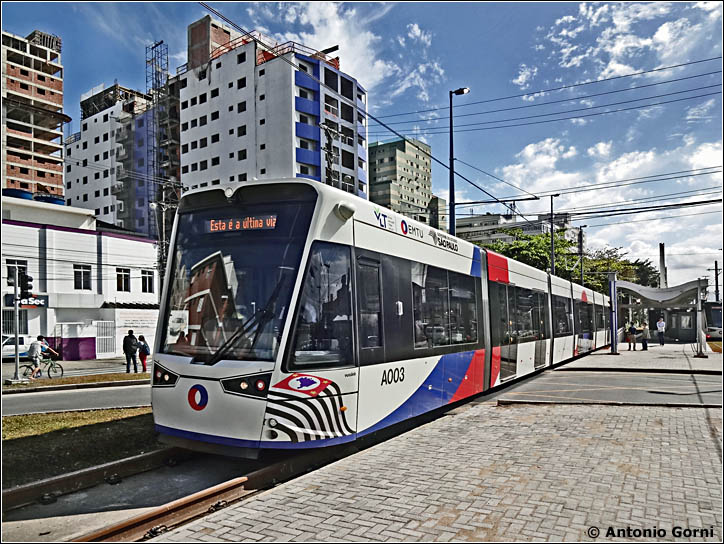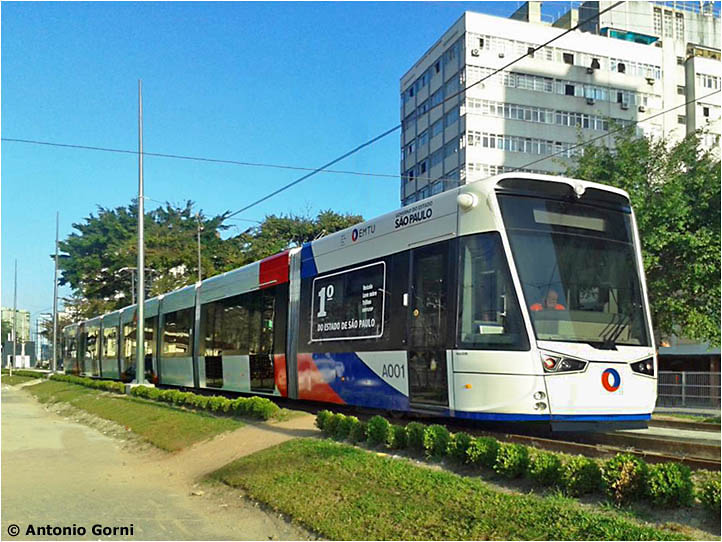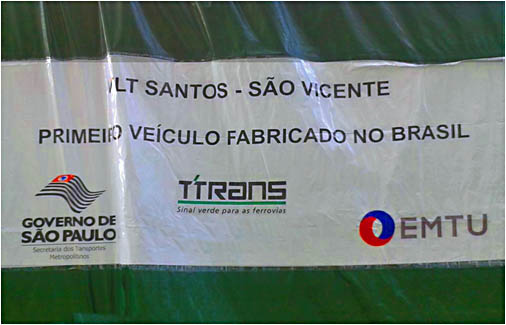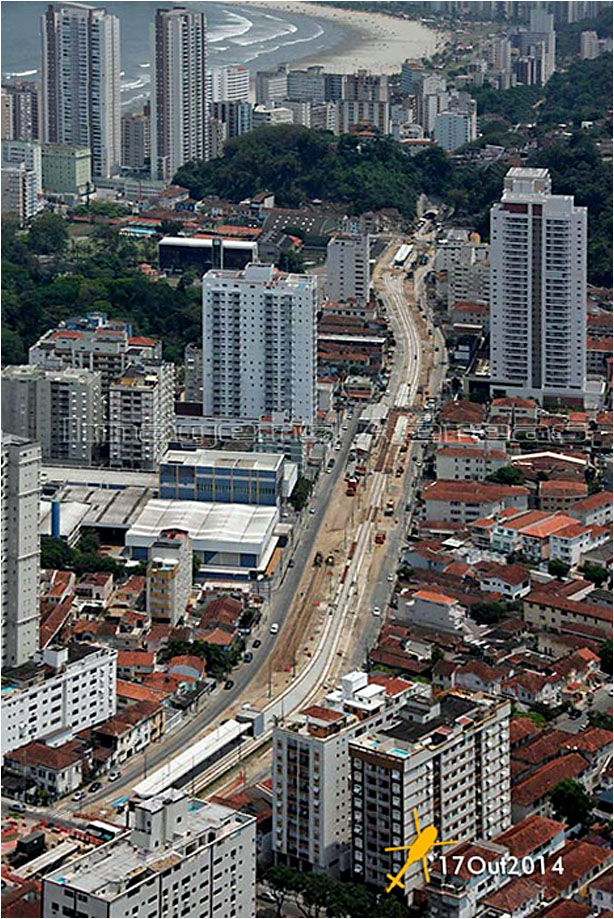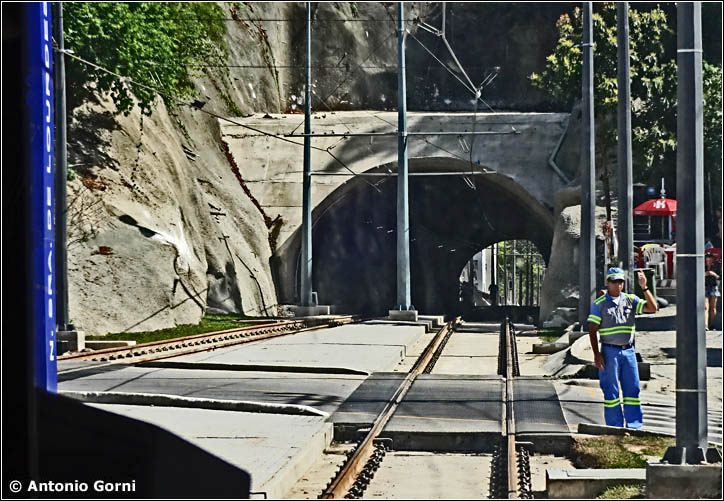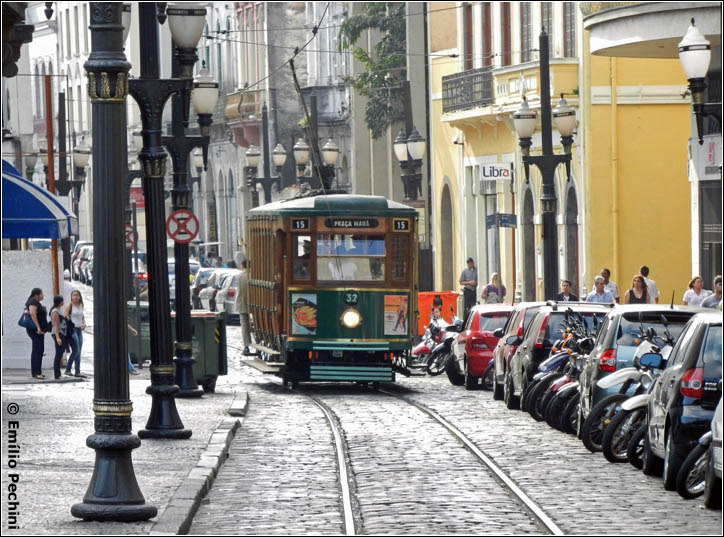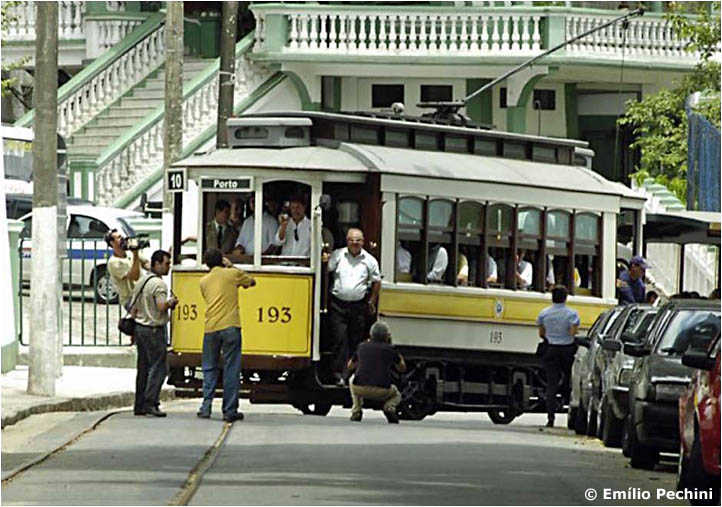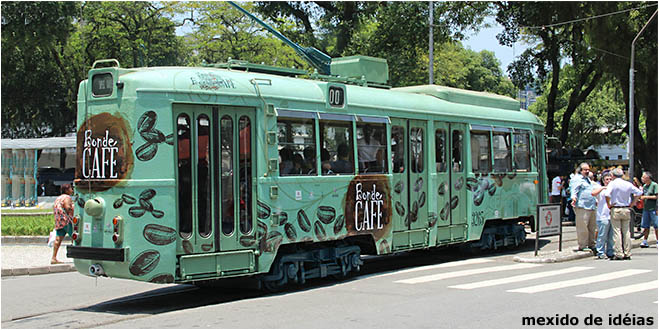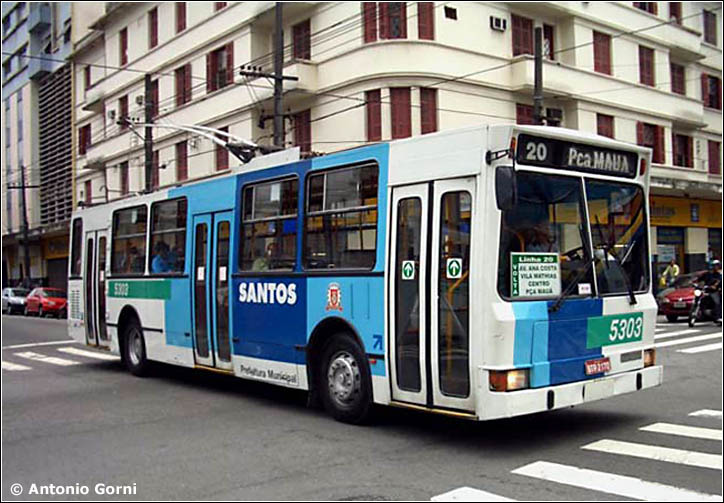
Like Brazil's first light rail lines, which opened in Rio de Janeiro in 1983 and Campinas in 1993 – and unlike the new light rail line in Rio which opened in 2016 – Phase 1 of the new Santos
line follows the path of an abandoned railroad. Freight trains ran there until 2008. (The new Rio system runs almost entirely on city streets which never had rails before.) The
Empresa Metropolitana de Transportes Urbanos (EMTU), a government
agency in São Paulo state, began construction in 2013 of the
Sistema Integrado de Transporte Metropoliltano (SIM) between São
Vicente and Santos on São Vicente Island. EMTU also ordered three
7-module light rail vehicles from Vossloh España in Valencia,
Spain. Veículo Leve sobre Trilhos (VLT) A001 arrived in 2014 and
began providing free rides to passengers on 27 April 2015. The photograph below
shows the garage and yard at "Porto"
station, near the extreme east end of the line [see map above] [Raimundo Rosa]: 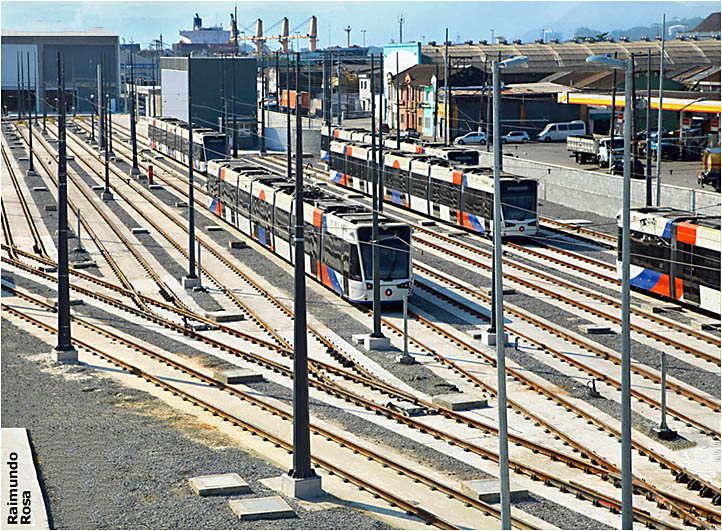
SIM
A003 was photographed in 2015 at José Monteiro station in
São Vicente [see map]. That's the flag of São Paulo state
(not of the USA!) on the front panel [Antonio Gorni]:
Here is the other side of the Santos VLT [Antonio Gorni]:
The photograph below was taken above Pinheiro Machado station (lower left) in 2014, when the
line was still under construction [see map]. The camera was facing west. Note tunnel entrance below
the trees, part of São Vicente and Santos Bay (upper left).
A closeup of the tunnel entrance, with guard, after it opened in 2015. The photo was taken from the front of a VLT that had just left Nossa Sra. de Lourdes station [see map above] [Antonio Gorni]:
The street railway era in Santos began with an 800 mm gauge line in 1871. The odd 1350 mm gauge of another line that opened in 1875 was adopted by the electric tram system that served the area from 1909 until 1971, and also by the tourist tramway that opened in 2000 and still runs today. Funded by the city, the latter's rolling stock consists of its original Scottish trams along with vehicles acquired from other tramway systems in Brazil, Portugal, Italy, U.S.A. and Japan. With 12 cars and 5 km of track, the Santos tourist tramway is easily the largest in Latin America. Here is one of the Scottish trams from the early 1900s [Emílio Pechini]:
The
press attacks one of the three trams imported from Porto, Portugal. 193
is a "Brill type" constructed in Porto about 1930 [Emílio
Pechini]:
Tram
3265 from Torino, Italy, was equipped with tables, chairs and coffee
makers and made a Bonde Café. Passengers enjoy breakfast
while touring the city. The car was built by Fiat in 1950 [mexido de idéias]:
The area's single trolleybus line – presently the only trolleybus line in existence in Brazil outside São Paulo – is a remnant of a large trolleybus system that opened in 1963. The six trolleybuses that run today on route 20 were built by Mafersa in Brazil and are operated by Viação Piracicabana. Like tourist tram 32 above, trolleybus 5303 is signed for Praça Mauá [Antonio Gorni]:
Trolleybus
operation was interrupted for 14 months beginning 4 June 2016 for the
installation
of special wire work at the line's intersection on Av. Dona Ana Costa
with the VLT [see map above]. The trolleybuses finally returned to
service on 22 August 2017. To be continued... / Continua...
The author wishes to thank São Vicente resident Antonio Gorni for his help in the preparation of this page.
Also see pages about The Trolleybuses of Latin America and If you have comments, criticism or suggestions,
This page was first uploaded on |
